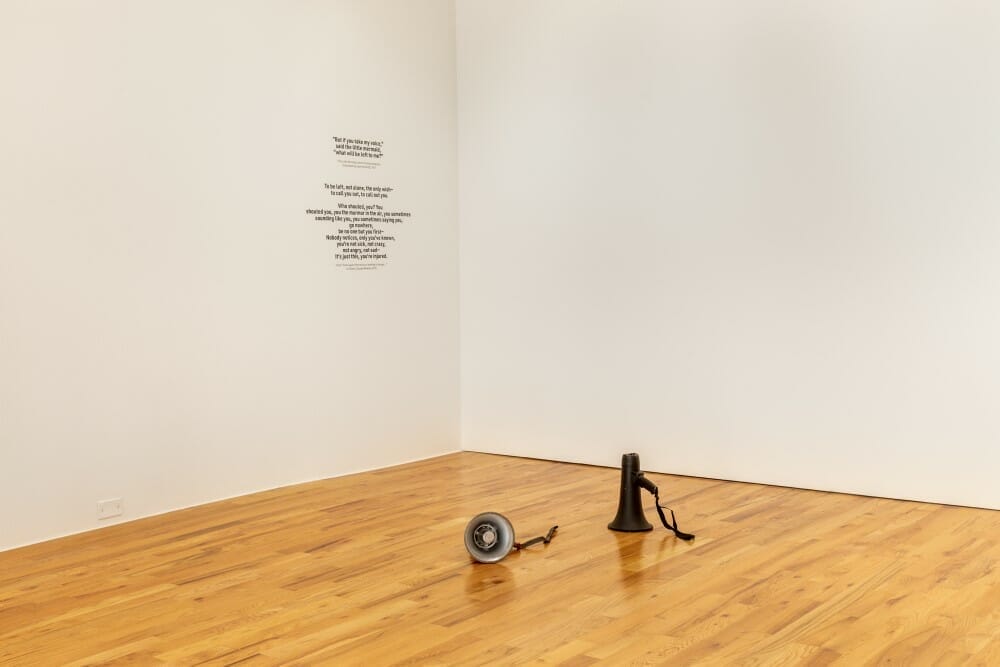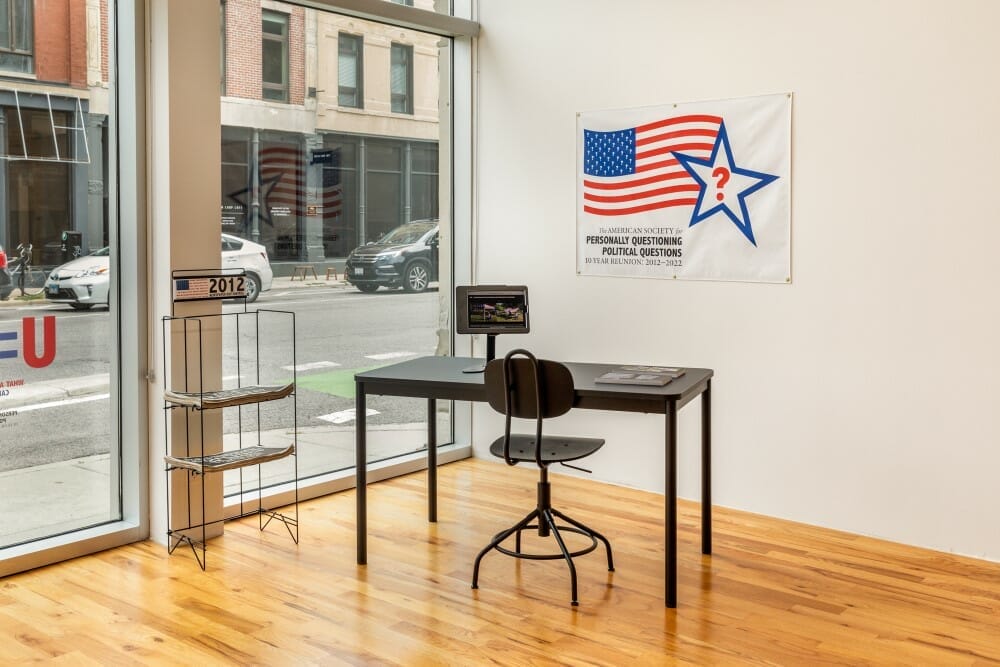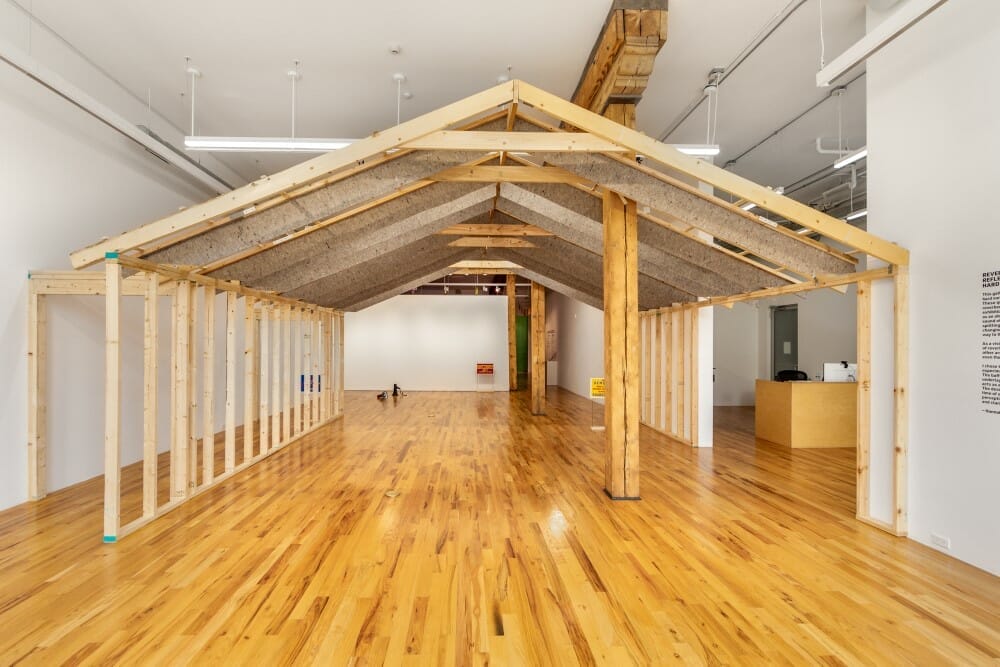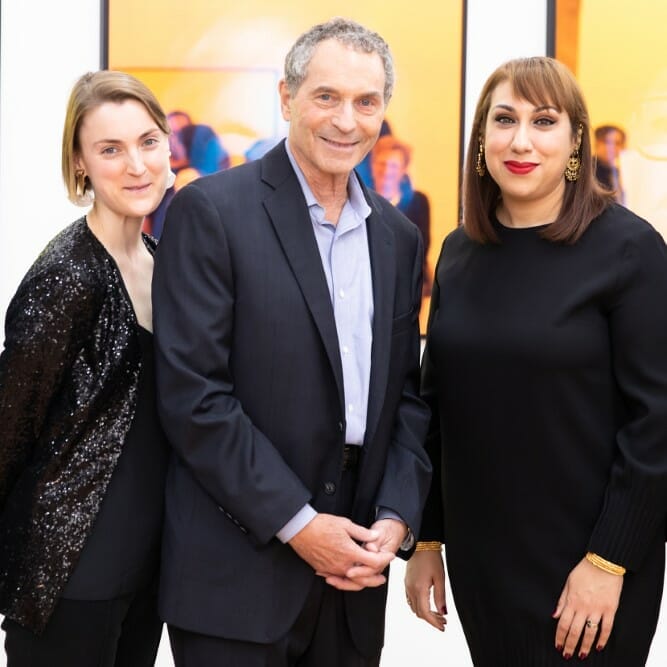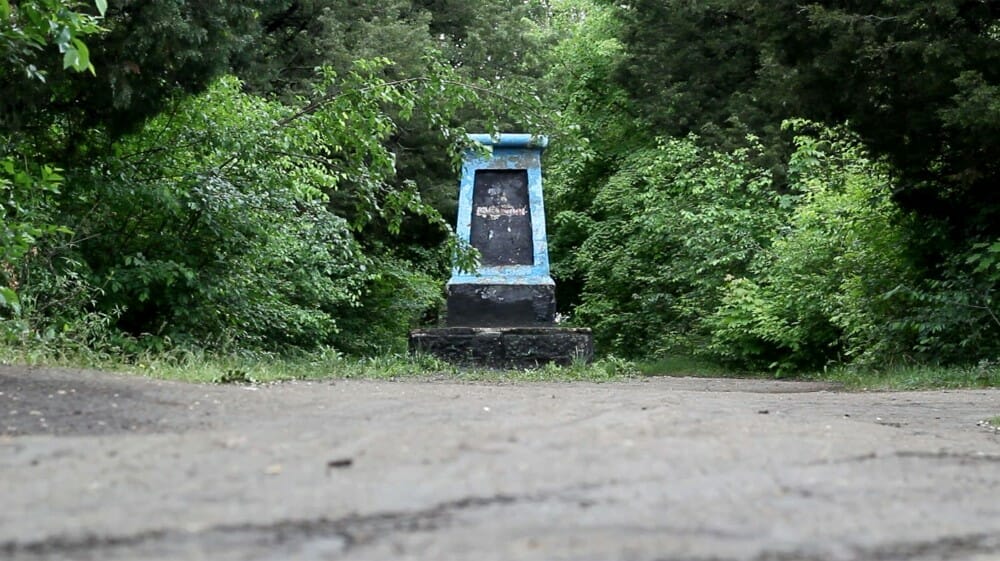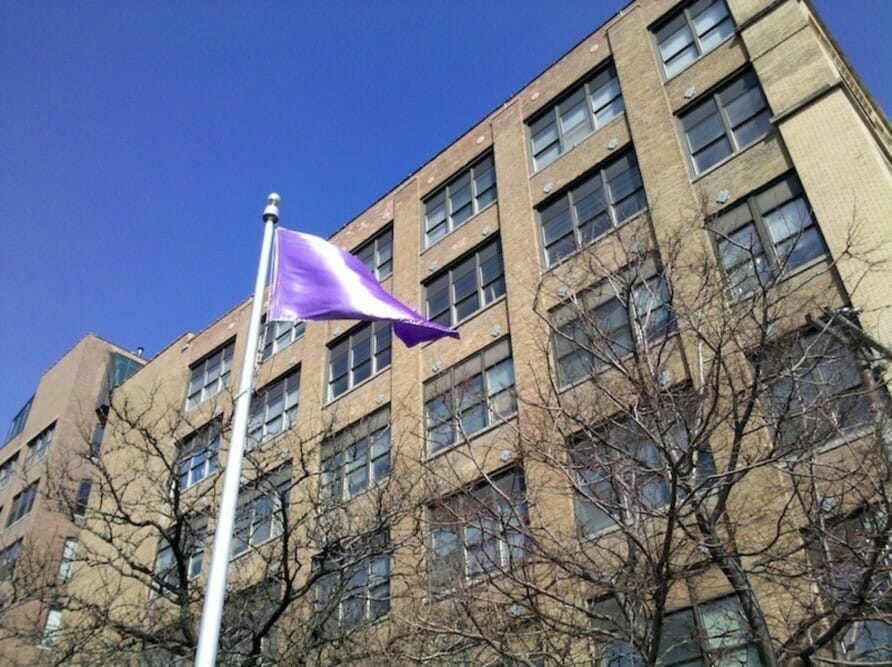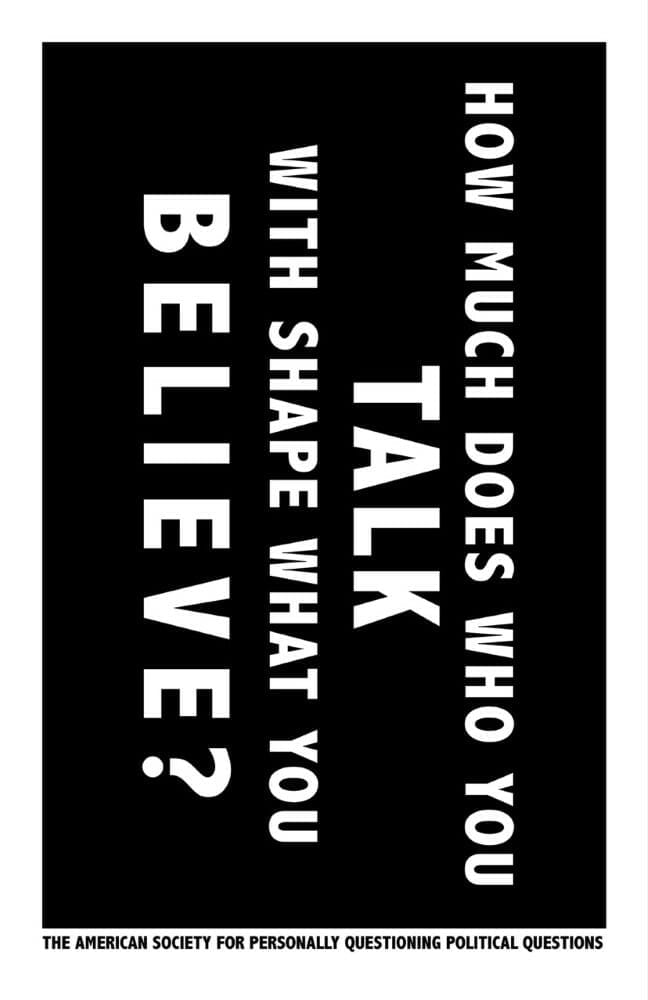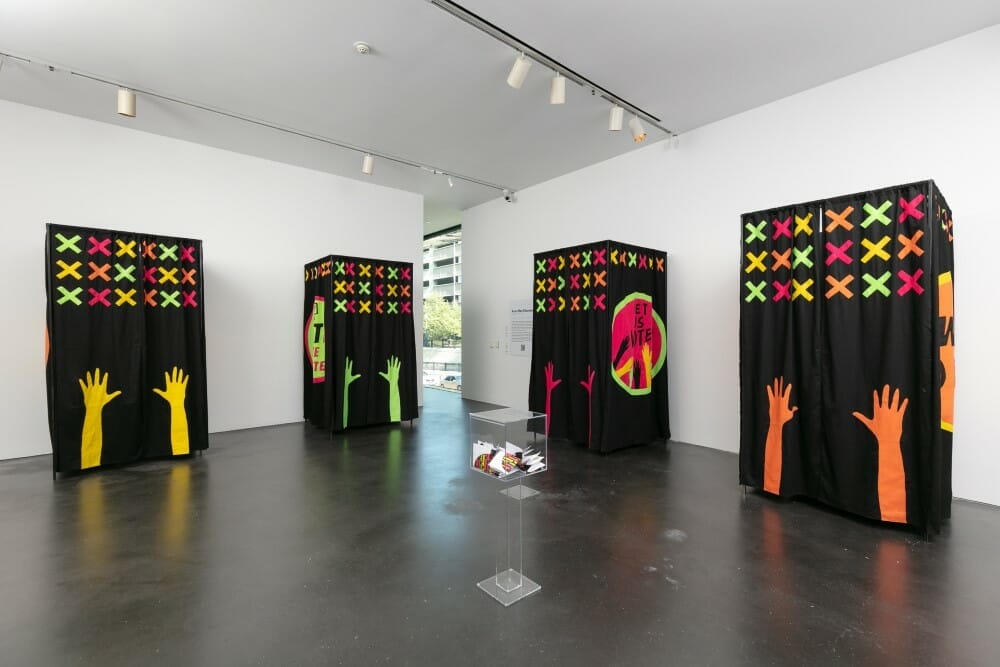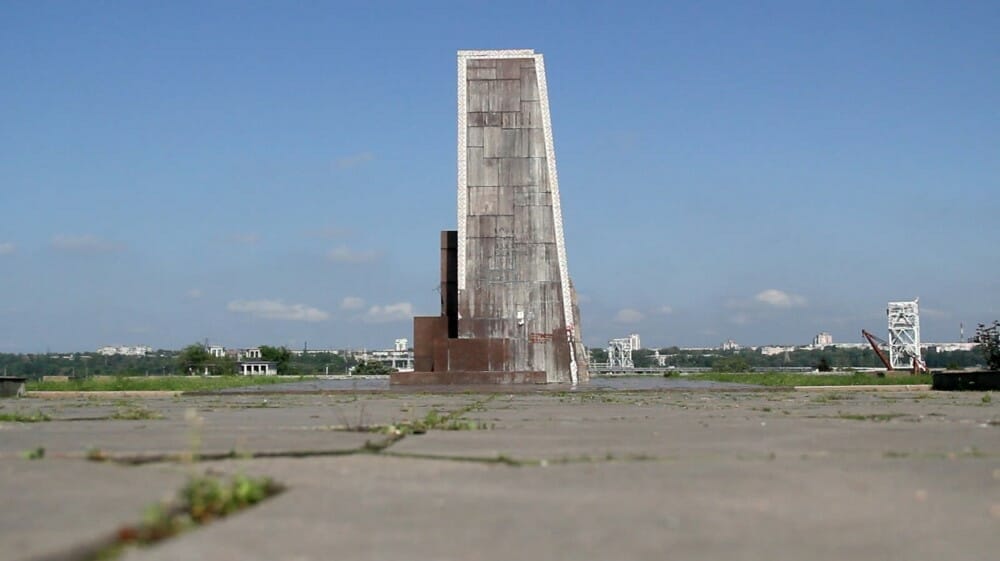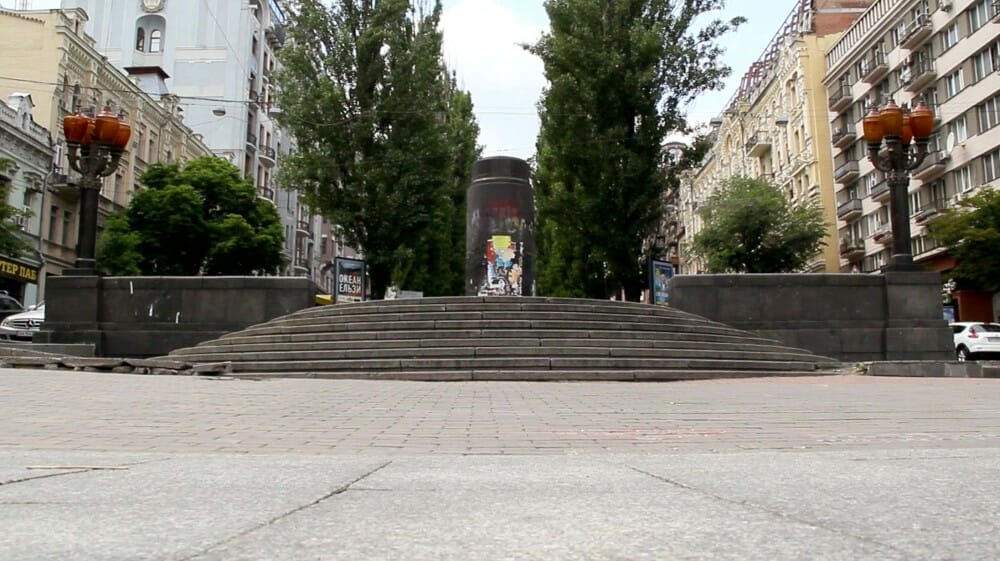Showcasing art that strives to bottle the political zeitgeist is not new fare for Weinberg/Newton Gallery. All that Glows in the Dark of Democracy, the gallery’s current exhibit (thru October 1), though is perhaps singular in being more real-time than their prior exhibits speaking to political topics. We learn, in fact, in a conversation with Kasia Houlihan, a Gallery Director, that the gallery’s timetable for presenting All that Glows in the Dark of Democracy was accelerated in order to meet the moment.
Read more about Kasia Houlihan’s (KH) comments about All that Glows in the Dark of Democracy to Picture This Post (PTP) below--
(PTP) How and why did this exhibit, All that Glows in the Dark of Democracy, come about?
(KH) Since the exhibit began—or certainly since its original conception—there have been many developments in the US and worldwide that speak to the theme of this exhibit.
The theme of democracy felt quite overwhelming at first. It’s such a big and unwieldy topic, as the term is defined in a variety of ways by different people. But simply making space for dialogue about the messy state of democracy felt urgent, and it was through my open conversations with the artists that the exhibition found its footing. Their ideas for new pieces as well as an interest in revisiting previous work through a 2022 lens have shaped the exhibition into what it has become – a space that incites attunement, offering the chance to be heard, while making room for differences of opinion.
All that Glows in the Dark of Democracy came together much more quickly than usual. In fact, we changed our exhibition schedule specifically to respond to the current political climate in real time. We then approached the ACLU of Illinois, an organization we’ve been lucky to partner with on two previous exhibitions. We were thrilled to hear that they were also grappling with ways to tackle current threats to democracy, including the increasing polarization of people across the country. So we agreed to team up and organize an exhibition as well as a series of related programs, including a Family Day, panel discussion and a storytelling event. These events are part of the ACLU of Illinois Engagement Series on Democracy: We the People – an effort to counter the us versus them mentality that has permeated the current political climate by asking: Do not tell us what you are against; tell us what you are for.
How does this art exhibit add to the political debate in ways that political polemics or other narrative formats cannot reach?
All that Glows in the Dark of Democracy is an undeniably embodied experience. There are several interactive pieces in the exhibition, including two powered-on megaphones one can pick up and speak into, as well as a series of voting booths and ballots to fill out. By offering several ways to look, listen, touch, and respond, the exhibition goes beyond an intellectual debate. The artworks invite us to think critically about and imagine alternate realities for our elections, our national symbols and monuments, our public as well as our private spaces. They directly address the viewer and ask them to consider the ways in which democracy is or isn’t working in their day-to-day lives as well as on the local, national and global level.
Hannah Givler’s reverb damping sculpture (2022) shifts one’s experience of sound as they walk under the gabled roof structure that spans the width of the gallery. This newly commissioned, site-specific installation creates space that is hospitable to active listening, which is a key element of productive dialogue, both in domestic and public spaces.
Aay Preston Myint’s Proposal for a new flag for the United States of America (2010) is a simple gesture imagining what it might look like to start over, but not clean – the colors of the flag muddled and buffed to a sheen. A new, queer, mixed-up start, maybe a little femme? A flag for an army of lovers, if these colors did run.
Ariana Jacob’s The American Society for Personally Questioning Political Questions (2012/2022) starts from a place of empathy, with the sole aim of listening and learning about where people of different political persuasions are coming from.
alejandro t. acierto’s you, the murmur in the air (2016) is a simple, yet powerful proposition to the viewer that evokes the First Amendment’s freedom of speech. Two powered-on megaphones ask what you would say if you were standing on your own soapbox. But as a complicated gesture of political agency, particularly as it is situated inside and not in the public square, this work also questions who is able to hear such appeals.
Aram Han Sifuentes’ The Official Unofficial Voting Station: Voting for All Who Legally Can’t (2016 - Ongoing) is a socially engaged art project focused on creating imaginative voting stations open to all, but particularly for the disenfranchised. Aram has made many versions of the piece, starting in 2016 and then another major iteration for the 2020 election. She has created an updated version for this exhibition, which includes three voting stations, a ballot box for visitors to submit their "unofficial" ballots, and a neon sign. The questions on this new Official Unofficial ballot ask which issues you wish you could vote on locally, nationally, and globally
Kandis Friesen’s Monuments / Monumental (2017) shows a series of tableaux vivants focused on the empty bases of former Lenin monuments in Ukraine. Kandis told me, “A conversation about these monuments and bases in Ukraine is a conversation about democracy, about the negotiation of public memory and public space, of defending or refuting official law and official narratives as they are determined by the state, or a state of war.” This piece is also connected to the current conversation in Chicago about our own city’s monuments.
How do you feel recent political events impact the experience of visitors to see the exhibit?
I’ve noticed a marked enthusiasm to engage with the artworks. When you’re seeing news headlines like, Democracy in crisis, it’s easy to get overwhelmed and feel powerless. I think visitors to the gallery are eager to have tangible ways to engage with these issues as well as the emotions they bring up.
The responses to Aram’s ballot question, “I am voting here because...” are quite telling. Here are a few examples:
I care about the future and I want my voice to be heard!;
It is an important way to show care for my community;
I've never been able to vote before because of my age, and for the first time I feel educated for the time I can cast a vote.
Our audience is always curious and engaged. Some are more tuned into the arts, others identify as social justice activists, but they are all committed to showing up and making change. It’s been wonderful to see such a diverse crowd coming through the space, including families and students. Our Education Coordinator, Lisa Lindvay, is always up for leading a tour of the exhibition as well as facilitating a hands-on art-making activity that’s inspired by the exhibition!
Please share with Picture This Post readers how you selected the artists and art in this exhibit.
The artworks are an eclectic mix of materials – a shiny lavender flag, a wood structure with felt accents, fabric voting booths, a flashing neon sign, newsprint, video and more. I typically start with the concepts and ideas each artist is engaging rather than the medium. The fact that several of the pieces are interactive became a common throughline that felt quite apt.
The six artists share an unflagging commitment to hope fueled by an insistence on action. Their work reminds us that progress is ongoing, that it takes many forms, and its light flares on multiple planes, from the living room to the city block, from the national to the global stage, both on the ground and in the collective imaginary. Of course, each of them draws from their own personal experiences that inform the specifics of their work, both in terms of material and approach.
How do you feel your personal background as an artist affects how you approach curating a show of this type?
I’ve noticed my background as an artist comes into play when I first visit an artist’s studio. I think they are put at ease when I express an intimate understanding of the nonlinear way new projects evolve, how ideas shift throughout the making process. My favorite experience is supporting an artist through the conceptualization and fabrication of a new piece. We can think out loud and move through the process together as peers.
For more information visit the Weinberg/Newton Gallery website
Nominate this for The Picture This Post BEST OF 2022???
Click Readers' Choice!
Photos Courtesy of Weinberg Newton Gallery



